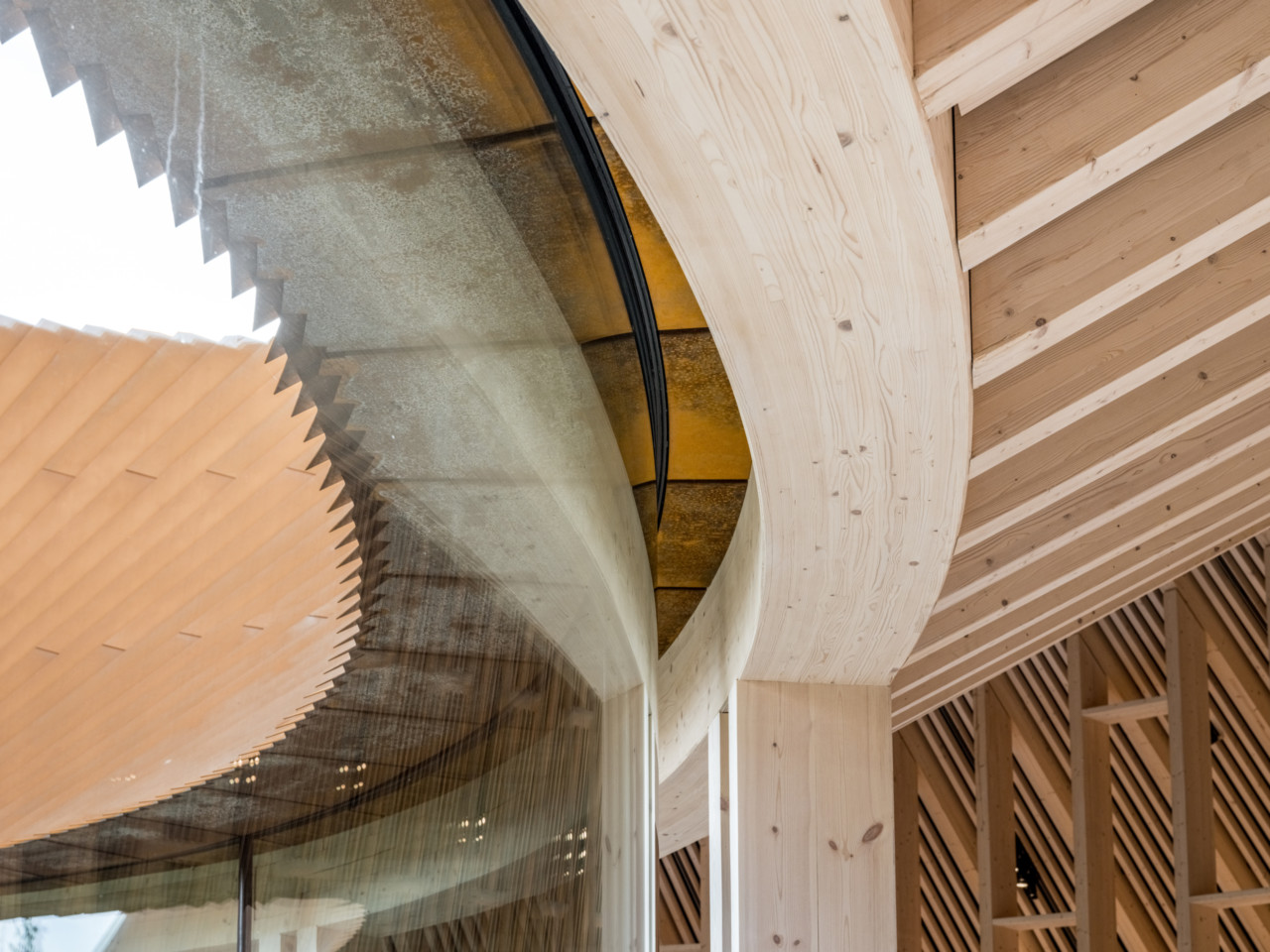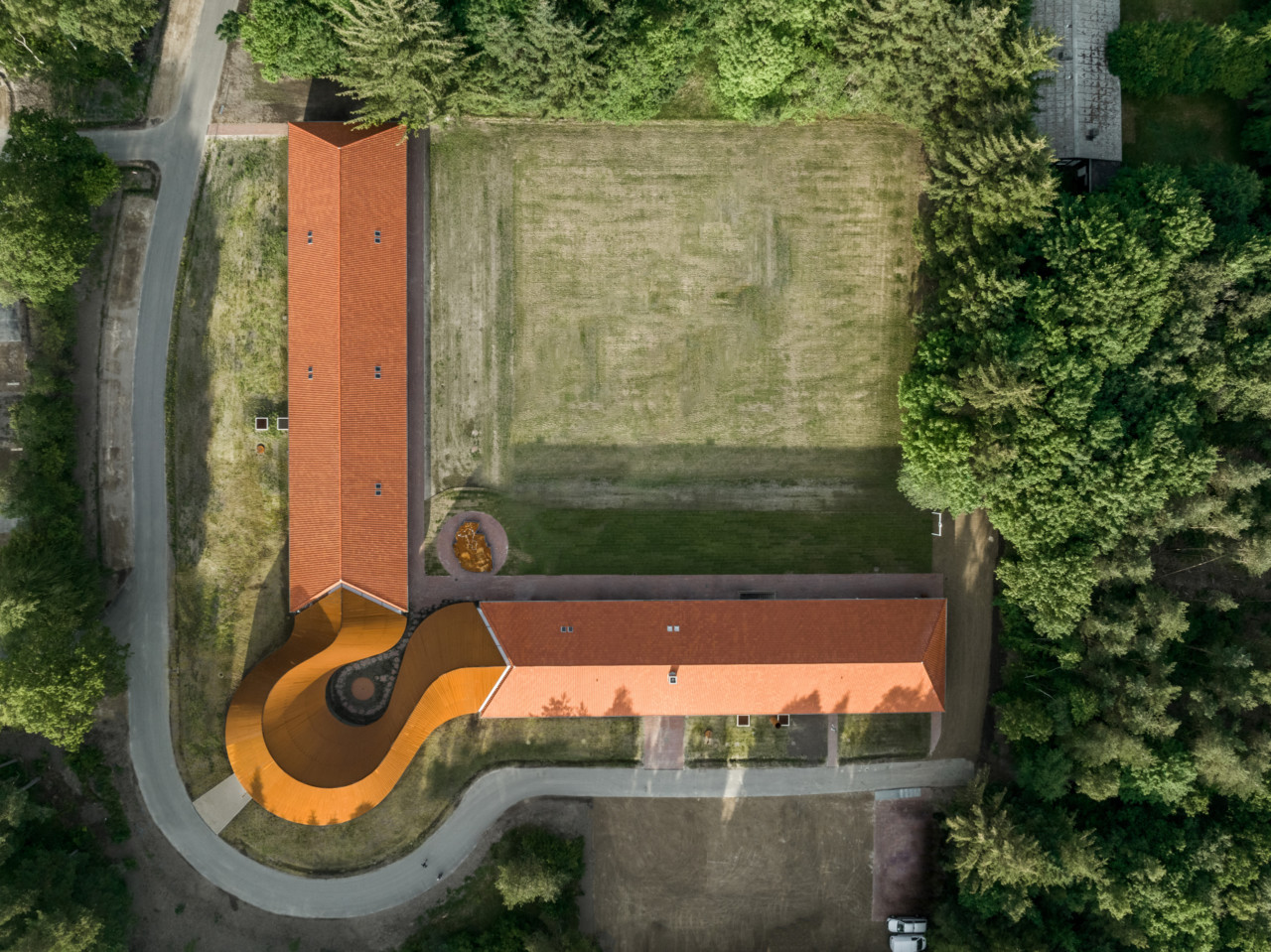In the mid- to late-1940s, the population of Oksbøl, a small town on the North Sea coast of Denmark, swelled considerably—so much so that it ranked as the Scandinavian country’s fifth largest city in the immediate years following World War II.
The influx was due to the presence of the Oksbøl Refugee Camp, a military training ground on the forested edge of town converted into what was one just one of several hundred camps for German refugees fleeing the Red Army. During this era, German refugees—mainly women, children, and the elderly—made up roughly 5 percent of the total Danish population with Oksbøl serving as the largest camp of its kind for the displaced Germans. Of the estimated 250,000 civilian Germans who left their homeland following the war, 35,000 of them were housed at the camp; in December 1948, the sprawling complex was shuttered nearly four years after it was first established.
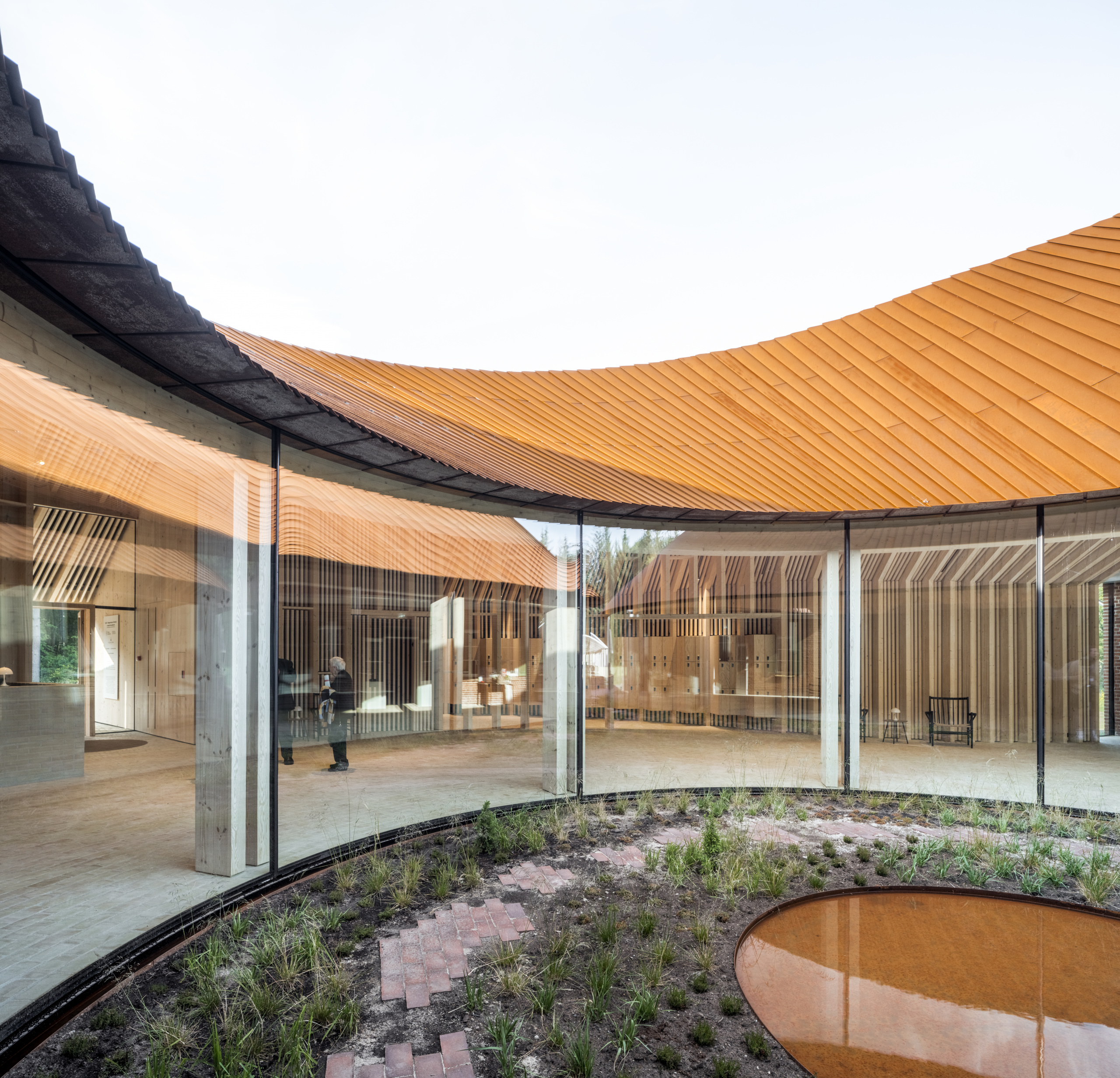
Today, what remains of the old Oksbøl Refugee Camp has been transformed into a newly opened museum that tells the story of refugees in Denmark while, more broadly, shedding new light on the plight of people across the globe who have fled prosecution and turmoil in their homelands.
Named FLUGT, the new museum is a project of Vardemuseerne, a West Jutland–based cultural and historic institution that operates a handful of museums, historic sites, and exhibition spaces across the region. FLUGT—Danish for “flee”—second museum for the state-recognized organization to be designed by Bjarke Ingels Group (BIG); Vardemuseerne previously tapped BIG for the Tirpitz Museum, a cultural complex focused on the history and natural landscape of Denmark’s West Coast. That museum is built into a series of dunes at the site of a long-abandoned wartime bunker just outside the port town of Esbjerg.
With FLUGT, which opened to the public yesterday, June 29, following an inauguration ceremony attended by Queen Margrethe, BIG similarly adapted a forsaken relic of World War II for new modern use. In this instance, the Copenhagen-founded firm worked alongside Vardemuseerne to convert—with a keen eye toward historic preservation—an old hospital on the grounds of the Oksbøl Refugee Camp into a roughly 17,200-square-foot museum that sets out to “give a voice and a face to humans who have been forced to flee their homes and capture the universal challenges, emotions and nuances shared by refugees then and today,” per museum director Claus Kjeld Jensen.
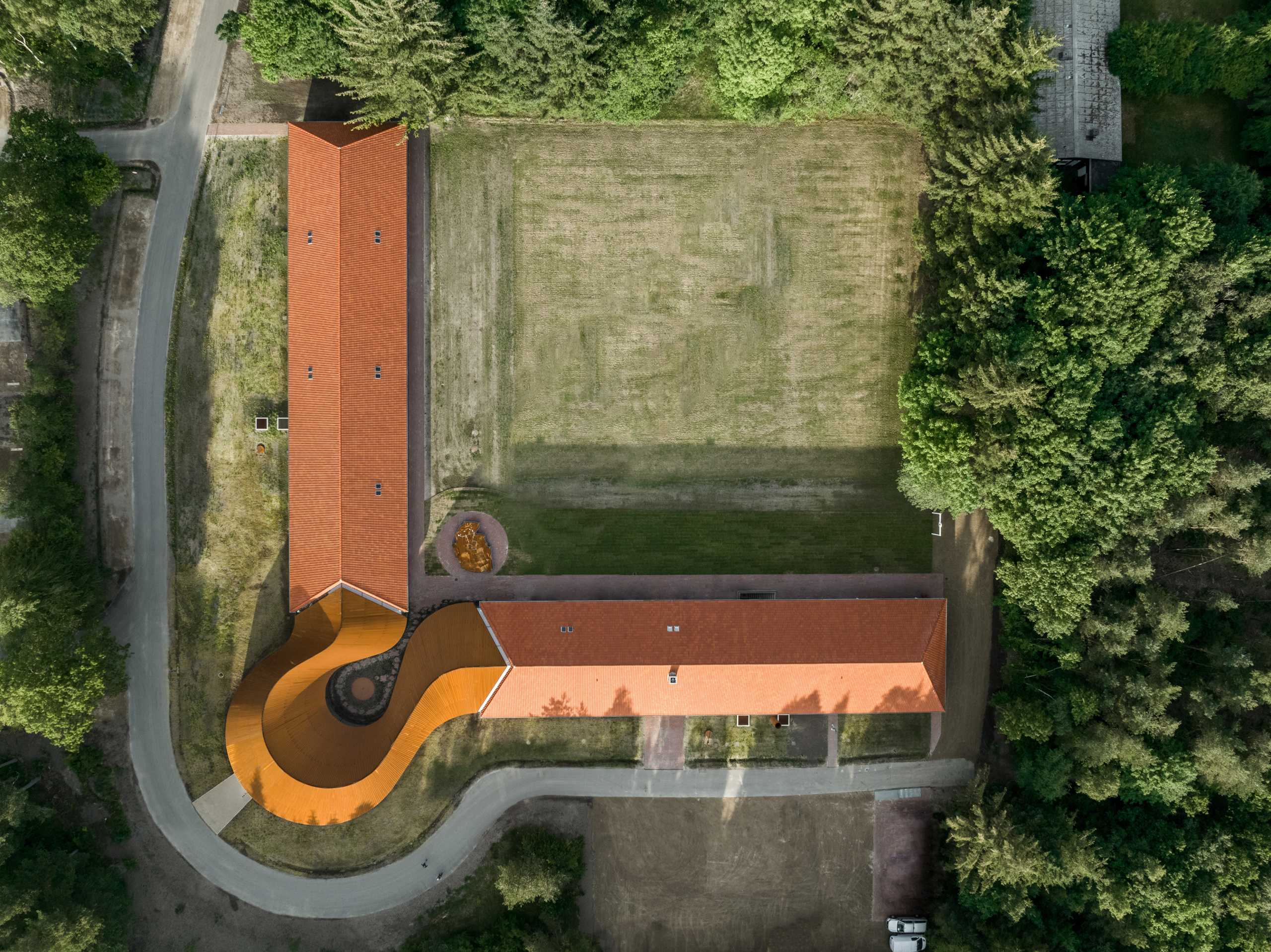
As detailed in a press release shared by BIG, core collaborators on the $16.7 million dollar project (Germany reportedly contributed $1.6 million to the effort) included engineering firm Ingeniør’ne and Dutch exhibition design studio, Tinker Imagineers, which also worked alongside BIG on the Tirpitz Museum project.
The old hospital is one of only a small handful of structures left standing at what was once Oksbøl Refugee Camp. In the creation FLUGT, the long-abandoned hospital’s two low-slung brick buildings have been fused together at the middle by a curving, Cor-ten steel-clad volume that adds nearly 4,500 additional square feet to the footprint of the new museum. The soaring, timber-framed pavilion serves as both connective tissue between the two historic buildings and a multi-use entrance hall; a curving wall of glass at the center of the space provides guests with views of a large central courtyard and the forest beyond. The courtyard, which creates a “peaceful sensory experience” by melding the naturalistic landscape (also designed by BIG) of the site with the museum interior, features a small circular reflecting pool at its center.
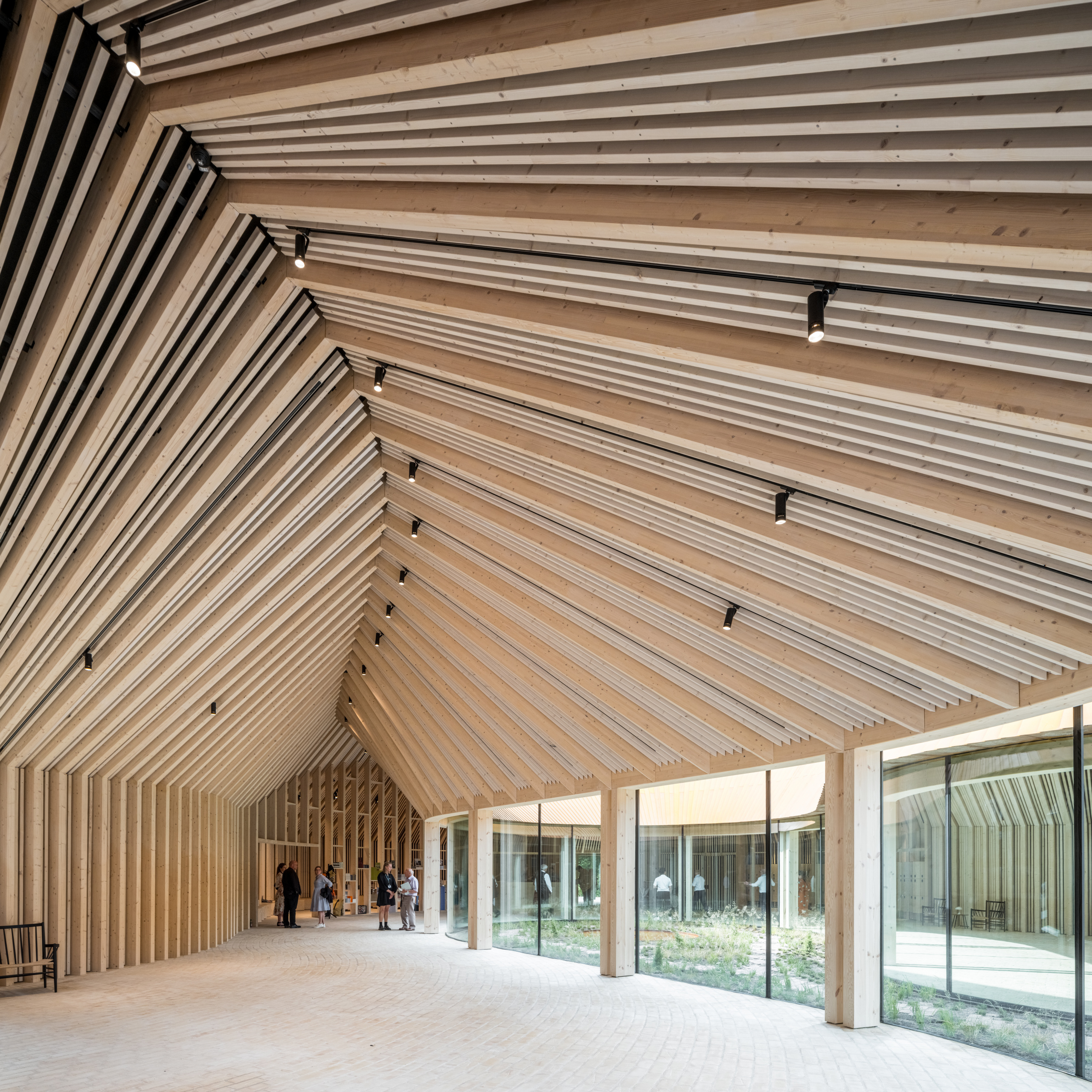
Back inside BIG’s curvaceous entrance hall, museum guests can split off into the two museum’s two distinct wings housed within the historic hospital buildings: an exhibition-dedicated area in the north wing that contains gallery spaces “organized according to the original flow/circulation in the hospital,” according to the firm. “While most of the hospital room walls were torn down, some of the inside walls are kept intact and stabilized by three cross sections, creating larger exhibition spaces.” To the south, the second old hospital building has been converted to accommodate smaller exhibition galleries, a conference room, café, and administrative spaces.
As BIG elaborated, the museum’s south wing possesses the “same character and materiality” as the exhibition wing. The entire complex features yellow brick flooring as a means of “connecting past and present structures.”
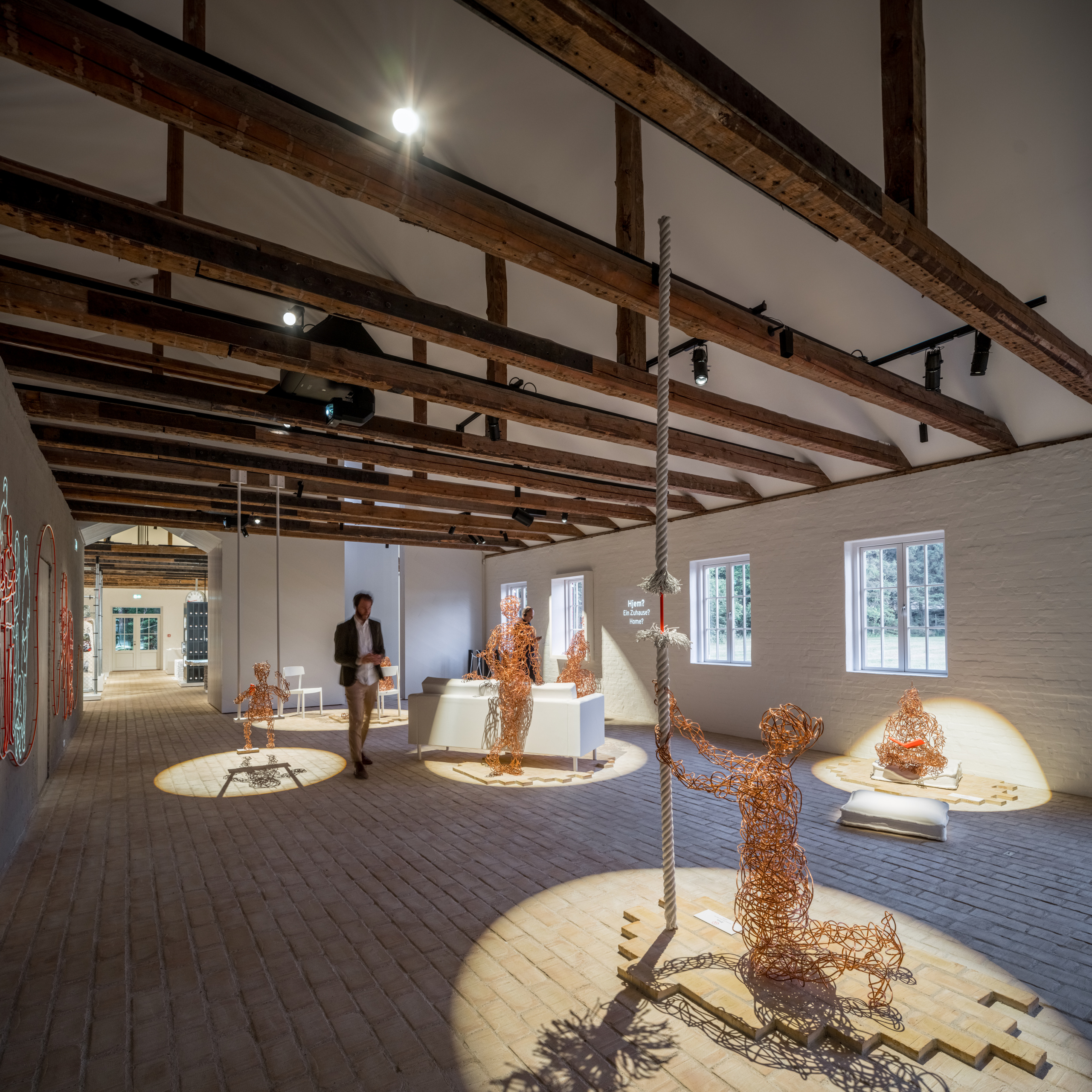
“The buildings are some of the last remaining physical manifestations of the former refugee camp, and not only is their preservation invaluable for future generations to understand the past and the present, the buildings also directly informed our design of the extension by means of their unique elongated form, structure and materiality,” said Frederik Lyng, project leader with BIG, in a statement. ”FLUGT is a great example of how adaptive reuse can result in sustainable, functional buildings that preserve our shared history while standing out architecturally.”
Currently on view at FLUGT are two permanent exhibitions. Refugees At All Times is an interactive exhibition that ”turns figures into people, and conveys the universal considerations, thoughts, and feelings associated with being a human being on the run,” as the museum explained. Joining Refugees At All Times is a second exhibition tracing the short but brutal history of the Oksbøl Refugee Camp. Two major outdoor elements of the museum are an immersive sound walk through the surrounding forest and the Refugee Cemetery where the dead of the camp are buried.
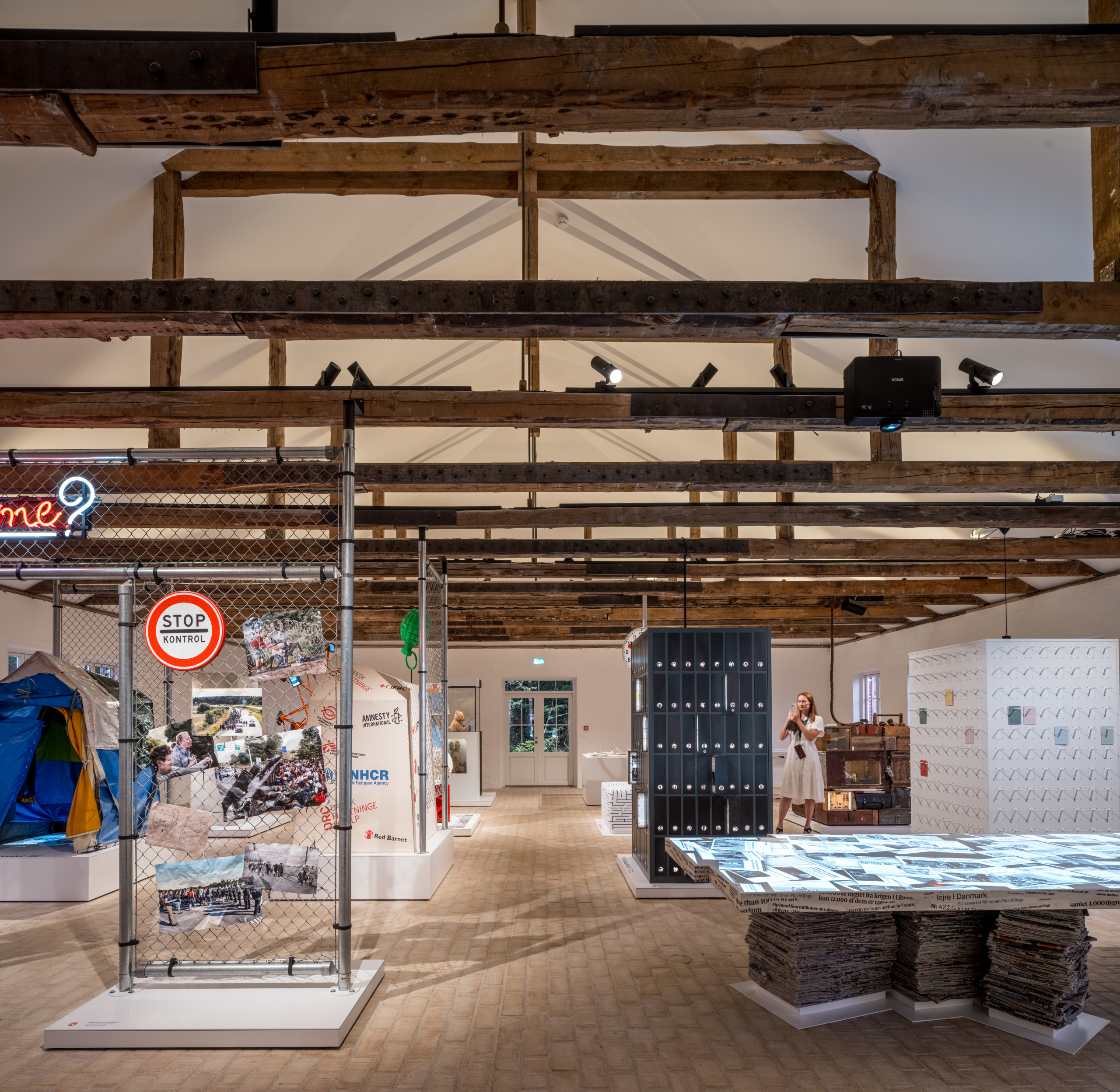
“The Refugee Museum of Denmark explores an important part of our history and a theme that is more relevant than ever, with millions of refugees currently displaced from their homes,” said Bjarke Ingels, BIG’s founding partner and creative director.
FLUGT indeed paints a sensitive, nuanced portrait of people across the globe—from Vietnam to Bosnia to Afghanistan and Ukraine and beyond—who have been impacted by forced migration. It also celebrates the myriad contributions that immigrants have made to Danish society over the decades. The opening of the museum, however, comes at a time when the prosperous Nordic nation’s current approach to immigration law is viewed as anything but friendly. In recent years, the country has enacted of the harshest anti-immigration rules in Europe and has come under withering criticism as of late due its draconian—and in the view of many, inhumane—refugee policies, particularly pertaining to policies impacting asylum seekers from war-ravaged Syria.










